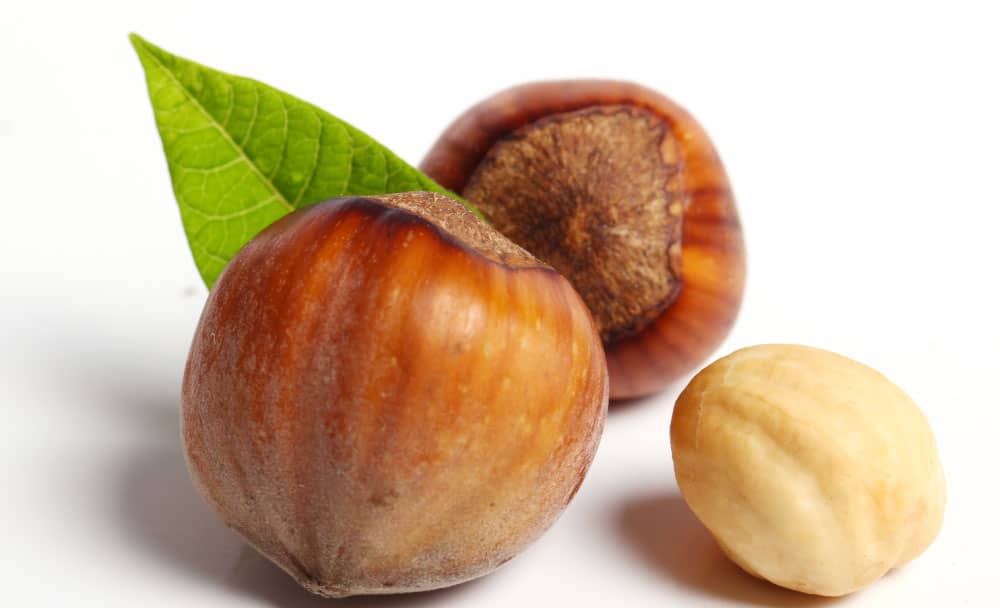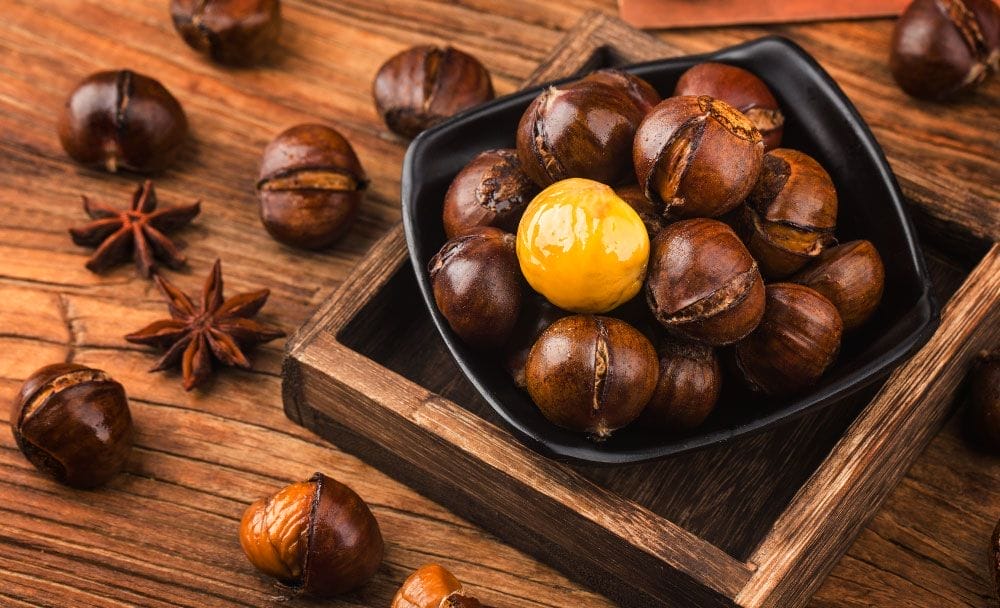Water chestnuts, also known as Trapa natans, are aquatic herbs that belong to the sedge family. Despite their name, water chestnuts are not actual nuts but tuber vegetables that grow underwater. They are popularly used in Asian cuisine and are known for their crunchy texture and mild, sweet flavor. They are known for their immense medicinal properties and are a significant feature in the Indian Ayurvedic system of medicine.
Water chestnuts’ nutrition properties are quite legendary. There is a range of health benefits of water chestnut because of their great potential in dealing with problems of the stomach, genitourinary system, liver, kidney, and spleen.[1]
In this article, we will take a closer look at several nutritional values of water chestnuts, the health benefits of water chestnuts and how to eat water chestnuts.
What are the nutritional properties of water chestnuts?
The primary water chestnuts nutrition value lies in its low calories and fat content, making them a healthy addition to the diet. Here is a general breakdown of the nutritional values of water chestnuts for a serving of the fruit: [2]
| Content | in grams | in percentage |
|---|---|---|
| Carbohydrates | 22.3 | 71.55 |
| Protein | 4.4 | 10.8 |
| Moisture | 70.35 | 7.3 |
| Fiber | 6.35 | 2.3 |
| Fat | 8.5 | 0.65 |
| Mineral | 0.65 | 1.85 |
| Calcium | 102.85 mg | |
| Iron | 3.8 mg |
What are the primary benefits of water chestnuts?
Rich in nutrients:
The health benefits of water chestnuts are immense as they are a good source of several essential nutrients, including minerals, vitamins, carbohydrates, calcium, phosphate, iron, copper, manganese, magnesium, sodium, and potassium.[2]
A common ingredient in many Ayurvedic preparations:
The health benefits of water chestnuts are so vast that they are used in various Ayurvedic treatments for their anti-inflammatory, anti-diabetic, anti-microbial, anti-ulcer, antibacterial, and morpho-physiological activity.[2]
Used in making ointments:
The fruits of water chestnuts are used in making liniments to cure rheumatism, sores, and sunburn.[2]
Used during pregnancy, sexually transmitted disease, and fertility:
Water chestnut fruits work effectively in nervous and general debility, seminal weakness, and leucorrhoea.[1]
Useful in diarrhea and bilious affections:
Water chestnuts are also very useful in controlling the effects of diarrhea.[1]
Good for eye diseases:
It has been seen that when the upper portion of the stem of the water chestnut plant was used in poultices as a discutient, the expressed juice helped immensely with eye diseases.[1]
How can water chestnuts be consumed?
Water chestnuts are versatile and can be enjoyed in various ways: raw, cooked, dried, baked, or grated into flour and made into cakes. [1]
Here are a few common ways how to eat water chestnuts:
Raw:
Water chestnuts can be eaten raw after peeling off their brown, papery skin. They have a crisp, refreshing texture and can be sliced or chopped and made into a salad or eaten to treat sore throat, anemia, fractures, and bronchitis.[3]
Boiled and used in curries:
Water chestnuts are also sometimes boiled or used as an ingredient in various curries such as egg and water chestnut curry or dry fish and water chestnut curry. [3]
Water chestnut flour:
Water chestnut flour, made by grinding dried water chestnuts, can be used as a batter or dough to make rotis, halwas, puris, barfis, and much more. [3]
Steamed:
Water chestnuts are often steamed [3], and can be consumed with other vegetables, meats, or sauces.
Juice:
Juice of water chestnuts can be consumed especially to control conditions such as diarrhea and dysentery. [3]
FAQs
1. Do the health benefits of water chestnuts also include benefits for the skin?
Yes, the health benefits of water chestnuts include benefits for the skin. Vitamins E and B, and zinc content in water chestnuts help promote skin health.
2. Does consuming water chestnuts lead to weight gain?
No, water chestnut does not lead to weight gain. On the contrary, its low-calorie content may help with weight loss and improved metabolism.
3. Does consuming water chestnuts cause gas?
Eating water chestnuts in excessive quantities may lead to gas formation because of their carbohydrate content.
Conclusion
Water chestnuts are a nutritious and versatile vegetable that can be enjoyed in various dishes, adding a unique crunch and mild sweetness to your meals. They are known in the Ayurvedic world for their great medicinal value, as a source of high nutrients, a great appetizer, astringent, diuretic, and aphrodisiac, as well as their cooling ad antidiarrhoeal functions. Water chestnut nutrition is also helpful in lumbago, sore throat, bilious affections, bronchitis, fatigue, and inflammation. Plant pacifies vitiated pitta, burning sensation, hemorrhages, skin diseases, low back ache, and general debility. Thus, the nutritional value of water chestnuts and the related health benefits of water chestnuts are tremendous.
Disclaimer:
This article is written from a health and wellness perspective only and is not medical advice. Kindly seek the help of a certified medical practitioner before initiating any treatment.





















